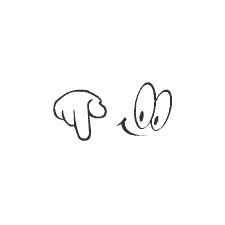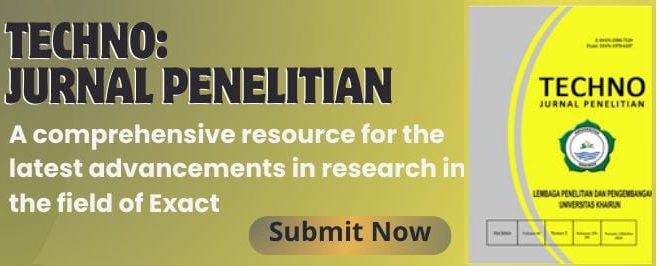Etnobotany in Customary Ceremony in Dayak Society, UUD Danum
Abstract
The Dayak Uud Danum people still maintain the traditional ceremonies of birth, marriage, death and traditional medicine. This tradition is carried out as a tribute to the cultural heritage of the ancestors. This tradition cannot be separated from the use of plants as media which have an important role. However, the effects of globalization can threaten the sustainability of these plants, so an inventory of their existence is needed. This study aims to identify various types of plants used in various customary traditions in the Dayak Uud Danum tribe in Kemangai Village, Ambalau District. The research method used is a survey method with data collection tools in the form of semi-structured interviews. The results showed that there were 6 family of plants used for traditional birth rituals, 3 families for traditional marriage, 5 families for traditional death rituals, and 35 families for traditional medicine. Processing plants for custom births by boiling, drinking and eating. In a wedding ceremony the processing of plants is eaten, wrapped and wrapped. In traditional death rituals, plants are used to make coffins, and statues are symbols of respect for the deceased. As for traditional medicine, most plants are processed by boiling and drinking. The parts of the plants that are most widely used in the four traditional rituals of the Dayak Uud Danum are the leaves, roots and stems.
Keywords
Full Text:
PDFReferences
Ahmad, A., Kaleem, M., Ahmed, Z., and Shafiq, H. 2015. Therapeutic potential of flavonoids and their mechanism of action against microbial and viral infectionsâ€â€A review. Food Research International, 77(2), 221–235.
Aiyelaagbe, O. O., B. J. Oguntuase, B. D. Arimah, and B. A. Adeniyi, 2008. The Antimicrobial Activity of Jatropha multifida Extracts and Chromatographic Fractions Against SexuaEy Transmitted Infections. The University of Ibadan. Nigeria. Journal of Medical Science. 8 (2): 143-147.
Alloy S, Albertus, Yovinus and Istiyani CP. 2008. Peta Keberagaman Subsuku Dayak di Kalimantan Barat (Figure of Subethnics Dayaknese in West Kalimantan). Dayakologi Institute. Pontianak. Indonesia.
Aryadi, M., Fithria, A., Susilawati, Fatria. 2014. Kearifan Lokal Masyarakat Dayak Terhadap Tumbuhan.
Cavoski, I., Caboni, P., and Miano, T. 2011. Natural pesticides and future perspectives. InMargarita Stoytcheva (Eds.), Pesticides in the Modern World - Pesticides Use and Management, (pp. 169-190). Rijeka: InTech Europe.
Charyadie, F. L., S. Adi dan S. R. Parwati, 2014. Daya Hambat Ekstrak Daun Alpukat (Persea americana, Mill.) terhadap Pertumbuhan Enterococcus faecalis. Universitas Hang Tuah. Surabaya. 8 (1).
Dewick, P.M. 2009. Medicinal Natural Products: A Biosynthetic Approach, 3rd Edition. West Sussex, UK: John Wiley & Sons, Ltd.
Efremila, Evy Wardenaar, Lolyta Sisillia. 2015. Studi Etnobotani Tumbuhan Obat Oleh Etnis Suku Dayak Di Desa Kayu Tanam Kecamatan Mandor Kabupaten Landak. Jurnal Hutan Lestari Vol. 3 (2) : 234 – 246.
John, A., O., Emmanuel, and D. H. C. Witness, 2008. Antidiarrhoeal Activity of Psidium guajava L. Linn. (Myrtaceae) Leaf Aqueous Extracts in Rodents. Journal Smooth Muscle Res. 44(6):195-207.
Lajuck, P., 2012. Ekstrak Daun Salam (Eugenia poliantha) Lebih Efektif Menurunkan Kadar Kolesterol Total dan LDL Dibandingkan Statin pada Penderita Dislipidemia. Universitas Udayana. Denpasar.
Lee, S.T., Welch, K.D., Panter, K.E., Gardner, D.R., Garrossian, M., and Chang, C.T. 2014. Cyclopamine: From Cyclops Lambs to Cancer Treatment. Journal of Agriculture and Food Chemistry, 62(30),7355-7362.
Kabera, J.N., Semana, E., Mussa, A.R., and He, X. 2014. Plant Secondary Metabolites: Biosynthesis, Classification, Function, and Pharmacological Properties. Journal of Pharmacy and Pharmacology, 2, 377-392.
Kuni, B.E.,Gusti, H., Idham. (2015).Etnobotani Masyarakat Suku Dayak Kerabat Di Desa Tapang Perodah Kecamatan Sekadau Hulu Kabupaten Sekadau. Jurnal Hutan Lestari Vol. 2 (3): 383-400
Mariska, I. 2013. Metabolit Sekunder: Jalur pembentukan dan kegunaannya. Balai Besar Penelitian Bioteknologi dan Sumberdaya Genetik. Diakses dari http://biogen.litbang.pertanian.go.id/
Martin, G.J, 1995, Ethnobotany, A People and Plants Conservation Manual.Chapman and Hall, London.
Maryadi. 2012. Studi Etnobotani Tumbuhan Obat di Desa Seriang Kecamatan Bedau Kabupaten Kapuas Hulu. Skripsi Fakultas Kehutanan. Universitas Tanjungpura. Pontianak.
Miles, Matthew B., and A. Michael Huberman, 2007, Qualitative Data Analysis (terjemahan), Jakarta: UI Press.
Mutaqin, A.Z., Astriani, W., Husodo, T., Partasasmita, R. 2018. Pemanfaatan Tumbuhan Untuk Beberapa Upacara Adat Oleh Masyarakat Desa Pangandaran Kecamatan Pangandaran Kabupaten Pangandaran. Jurnal Pro Life Vol. 5 No. 1 .
Nurdin, B. V., and Ng, K. S. F. 2013. Local Knowledge of Lampung People in Tulang Bawang: An Ethnoecological and Ethnotechnological Study for Utilization and Conservation of Rivers. Procedia-Social and Behavioral Sciences. 91: 113–119.
Patimah, 2010. Keanekaragaman Tumbuhan Obat di Kawasan Hutan Gunung Sinabung Kabupaten Karo Sumatera Utara. Universitas Sumetera Utara. Medan. 2 (1):120-128.
Rahyuni, Yniati, E., & Pitopang, R. (2013). Kajian Etnobotani Tumbuhan Ritual Suku TAJIO di desa Kasimbar Kabupaten Paringi Mountong. Online Jurnal of Natural Science, 2(2), 46–54.
Sardana A. , Hernawati J., Dharma N.G.G..Y, Nugroho A.E and Aliyah N. 2011. Potret Hutan Provinsi Kalimantan Barat (Figure of West Kalimantan Province). BPKH Wilayah III Pontianak. Pontianak.
Septiatin. 2008. Seri Tanaman Obat; Apotik Hidup dari Rempah-rempah, Tanaman Hias dan Tanaman Liar. Bandung: Yrama Widya.
Setyawan, A.D. 2010. Review: Biodiversity conservation strategy in a native perspective; a case study of shifting cultivation at the Dayaks of Kalimantan. Bioscience, Vol. 2, No. 2.
Sugiyono. 2007. Memahami Penelitian Kualitatif. Alfabeta. Bandung.
Supiandi, M.I., Susriyati, M., Siti, Z., Hendrikus, J., Benediktus, E. 2019. Ethnobotany of traditional medicinal plants used by Dayak Desa Community in Sintang, West Kalimantan, Indonesia. Biodiversitas Vol. 2 Number 5. DOI: 10.13057/biodiv/d200516
Takoy DM, Linda R, and Lovadi I, 2013. Tumbuhan Berkhasiat Obat Suku Dayak Seberuang di Kawasan Hutan Desa Ensabang Kecamatan Sepauk Kabupaten Sintang. Protobiont, Vol 2, No. 3, hal. 122-128.
Tapundu, A. S., & Anam, S. (2015). Studi Etnobotani Tumbuhan Obat Pada Suku Seko Di Desa Tanah Harapan , Kabupaten Sigi , Sulawesi Tengah. Biocelebes, 9(2), 66–86.
Ting, Z., Chang-Hong, W., and Zheng-Tao, W. 2010. Chemical constituents and pharmacological actions of genus Peganum: research advances. Journal of International Pharmaceutical Research,37(5), 333–45.
Van Wyk, B-E., and Wink, M. 2004. Medicinal Plants of the World, 1st ed., Briza Publications, Pretoria (South Africa), p. 258.
Van Wyk, B-E., Van Oudtshoorn, B. and Gericke, N. 2002. Medicinal Plants of South Africa, 2nd ed., Briza Publications, Pretoria, pp. 202–203
DOI: https://doi.org/10.33387/tjp.v9i2.2227
Refbacks
- There are currently no refbacks.
Copyright (c) 2020 Hendrikus Julung

This work is licensed under a Creative Commons Attribution-NonCommercial 4.0 International License.
-------------------------------------------------------------------------------------------------------------------------------------------------------------------
-------------------------------------------------------------------------------------------------------------------------------------------------------------------
TECHNO: Jurnal Penelitian
Published by: LPPM Universitas Khairun
Addres : Jalan Yusuf Abdurrahman Kampus II Unkhair, Kelurahan Gambesi, 97722 Kecamatan Kota Ternate Selatan, Provinsi Maluku Utara, Email: techno@unkhair.ac.id | URL: http://ejournal.unkhair.ac.id/index.php/Techno
Techno Jurnal Penelitian is licensed under a Creative Commons Attribution-NonCommercial 4.0 International License.



























